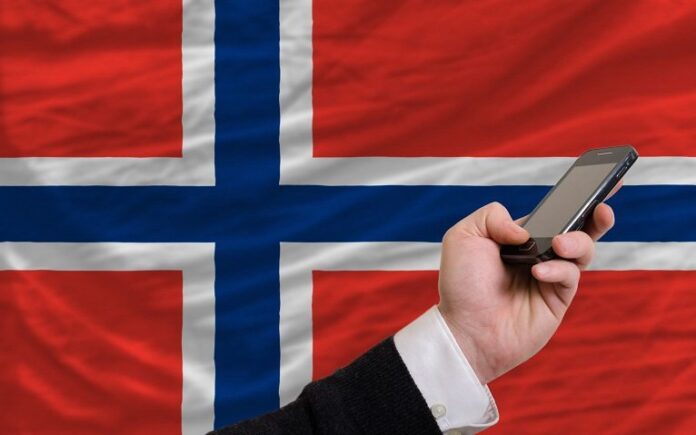Telenor, Teliasonera rapidly expanding LTE networks
The country of Norway likes to be first in the digital world. Together with Sweden, it was the first to debut LTE when TeliaSonera launched the service in Oslo and Stockholm in 2009. And this spring, the country announced it would be the first to ditch analog FM radio in favor of going all digital by 2017.
With 6.7 million mobile connections in a country of 5.1 million people, according to GSMA figures, it’s clear that Norwegians love their mobile devices — and they have the money to spend on them. Norway is the fourth richest country in the world, two places ahead of the U.S., with a per capita gross domestic product of $56,920, according to the 2014 World Atlas ranking.
Unfortunately, Norwegians may pay more for their mobile services because the country has a bit of a competition problem. Telenor, the company that evolved out of a former state-owned monopoly, dominates all sectors of the telecom market. According to the company’s own measures, Telenor had 50% of the mobile voice market and 57% of the mobile broadband market in 2013.
Unfortunately, after efforts to try to get more players into the market, Norwegian authorities inadvertently squeezed out the No. 3 player, Tele2’s Norwegian unit, in the spectrum auction in December 2013. Tele2 was out bid and received no new spectrum.
With few options in the country, Tele2 sold its operations to TeliaSonera, which operates the No. 2 NetCom in Norway, for 4.5 billion Swedish Kronor ($520 million) in a deal that closed this March. With the addition of Tele2 assets, Netcom is expected to have 40% share of the market, a healthy competitor to Telenor, but the only one.
“I can’t see that it will be positive for the consumers to go from effectively three major players to two,” said Fredrick Jungermann, the managing director of the consultancy firm Tefficient. “There is a new player but it will be significantly weaker than the one that left. It’s not one to one.”
That new player is Ice.Net, owned by Access Industries, which is an industrial group founded by Ukrainian-American billionaire Leonard Blavatnik. Eager to enter the lucrative Norwegian market, ICE outbid the other three players to gain spectrum in the 2013 auction, which also left Tele2 without an allotment. In addition, ICE benefited from the concessions TeliaSonera had to make to win approval for its acquisition of Tele2 from the Norwegian Competition Authority. ICE has a roaming agreement with TeliaSonera, some of its infrastructure and assets from Tele2’s Network Norway, including its customer base. Even with all that, ICE is still a very distant third player to Telenor and TeliaSonera’s NetCom.
In the meantime, there’s a heated race between the remaining big players, Telenor and NetCom, to win over customers in Norway — and they seem to be doing it by building LTE networks.
In the recent OpenSignal ranking, NetCom had the second fastest network in the world with an average download speed of 24 megabits per second. (Vodafone in Spain was first 25.2 Mbps). NetCom also boasts LTE coverage reaching 84% of the population, which in Norway with a population distributed over some challenging geography, that’s saying something. Still Telenor claims to match that coverage with 84% as well.
In addition, during the 2013 auction NetCom took the license with a coverage obligation where they are supposed to cover 98% population with 4G by 2018, except NetCom plans to do it faster and reach the 98% coverage goal by 2016. Last year Netcom added 1,006 sites, an average of 10 per working day, according to Jon Christian Hillestad, TeliaSonera’s head of technology in Norway.
“They are really going all in on 4G,” said Jungermann. “Everyone in Norway knows that Telenor has [the] best network, but NetCom is making serious effort to change that perception.”
NetCom was also the first to launch LTE-Advanced, which may be why it came out so far ahead of Telenor in the OpenSignal rankings. In contrast, Telenor’s average network download speed was at 8 Mbps. But not to be outdone, Telenor has its own plans to launch LTE-A this spring as well as further network expansion, promising that by summer, nine out of 10 Telenor customers in Norway will have 4G access.
Norwegian customers appear to be ready to make the move to LTE, and at the end of 2014 Telenor reported that 43% of its customers had a 4G enabled phone.
“In Norway, the rising number of 4G enabled handsets together with our investments in network expansion resulted in strong mobile service revenue growth of 10%, said Telenor president and CEO Jon Fredrik Baksaas, commenting on the its fourth quarter results. “For the first time ever, there are more 4G phones in Telenor’s Norwegian network than 3G phones and our customers more than doubled their data use in the past year.”
For now, the two-way race between Telenor and Netcom is benefiting consumers in terms of speed and coverage, if not necessarily in price. But the situation is far from static.
While Norway has switched off the analog radio, it has not yet freed up another kind of spectrum the 700 MHz often used for television broadcasting, but considered ideal for LTE. And when that spectrum comes available for auction, no doubt the game will change again.

